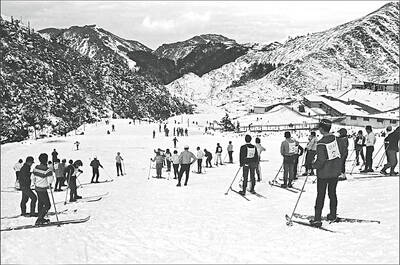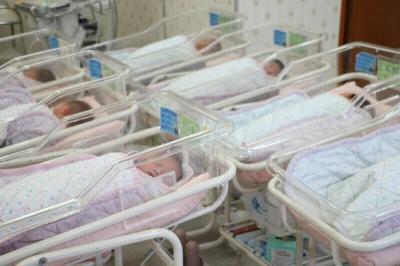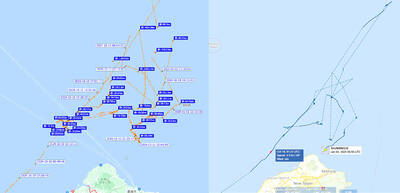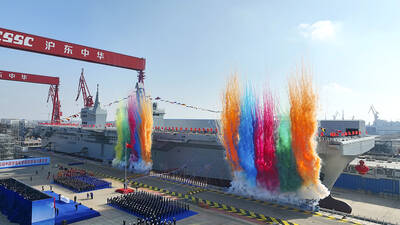The Centers for Disease Control’s Central Disease Command Center yesterday asked the seven passengers who were on board the same flight as the second confirmed swine flu patient in Hong Kong to contact the center for testing.
The center’s spokesperson Shih Wen-yi (施文儀) said the infected Hong Kong passenger left for the US on April 29 and arrived in San Francisco on May 2. The patient then left Las Vegas on May 5 and returned to San Francisco on Sunday, where he was scheduled to return to Hong Kong.
The flight was identified as Cathay Pacific Airlines CX879, Shih said. The patient started to show flu symptoms on May 6 and was detained by Hong Kong inspection and quarantine officers at the airport when he arrived on Monday.
Those sitting near the infected passenger — three rows ahead and three rows behind — were required to take preventive medication.
Shih said seven passengers who boarded CX879 and arrived in Hong Kong on Monday had entered Taiwan this week. It was confirmed that none of the passengers sat close to the infected passenger, Shih said. Shih said the center had to yet to decide whether these seven passengers should be inspected or be asked to take preventive medication. Nonetheless, the center wanted the seven passengers to contact them immediately.
Shih also advised the public to avoid visiting the West Coast of the US as the flu outbreak there is now widespread.

A strong continental cold air mass and abundant moisture bringing snow to mountains 3,000m and higher over the past few days are a reminder that more than 60 years ago Taiwan had an outdoor ski resort that gradually disappeared in part due to climate change. On Oct. 24, 2021, the National Development Council posted a series of photographs on Facebook recounting the days when Taiwan had a ski resort on Hehuanshan (合歡山) in Nantou County. More than 60 years ago, when developing a branch of the Central Cross-Island Highway, the government discovered that Hehuanshan, with an elevation of more than 3,100m,

Taiwan’s population last year shrank further and births continued to decline to a yearly low, the Ministry of the Interior announced today. The ministry published the 2024 population demographics statistics, highlighting record lows in births and bringing attention to Taiwan’s aging population. The nation’s population last year stood at 23,400,220, a decrease of 20,222 individuals compared to 2023. Last year, there were 134,856 births, representing a crude birth rate of 5.76 per 1,000 people, a slight decline from 2023’s 135,571 births and 5.81 crude birth rate. This decrease of 715 births resulted in a new record low per the ministry’s data. Since 2016, which saw

SECURITY: To protect the nation’s Internet cables, the navy should use buoys marking waters within 50m of them as a restricted zone, a former navy squadron commander said A Chinese cargo ship repeatedly intruded into Taiwan’s contiguous and sovereign waters for three months before allegedly damaging an undersea Internet cable off Kaohsiung, a Liberty Times (sister paper of the Taipei Times) investigation revealed. Using publicly available information, the Liberty Times was able to reconstruct the Shunxing-39’s movements near Taiwan since Double Ten National Day last year. Taiwanese officials did not respond to the freighter’s intrusions until Friday last week, when the ship, registered in Cameroon and Tanzania, turned off its automatic identification system shortly before damage was inflicted to a key cable linking Taiwan to the rest of

China’s newest Type-076 amphibious assault ship has two strengths and weaknesses, wrote a Taiwanese defense expert, adding that further observations of its capabilities are warranted. Jiang Hsin-biao (江炘杓), an assistant researcher at the National Defense and Security Research, made the comments in a report recently published by the institute about the Chinese Communist Party’s (CCP) military and political development. China christened its new assault ship Sichuan in a ceremony on Dec. 27 last year at Shanghai’s Hudong Shipyard, China’s Xinhua news agency reported. “The vessel, described as the world’s largest amphibious assault ship by the [US think tank] Center for Strategic and International